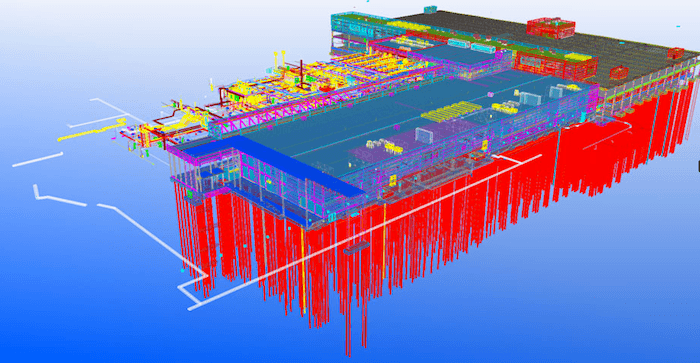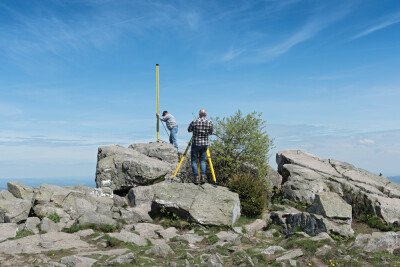I’ve been taking a lot of meetings with architects over the past year to talk about scan to BIM services. If there’s a way to tell me “no,” trust me, I’ve heard it. I’ve also been in business long enough to know that not every reason is truthful. Some reasons are just excuses that they tell you because they don’t want to admit the real reason they’re saying no to you (or themselves).
I’m making the list of reasons public with the hopes of improving this situation for both the architects and the service providers. If you are doing the pitch, you need to have a ready answer for this first set. The second set is for the architects: If you feel this way, I encourage you to take a look at how you intend to progress as a company over the next decade, because these are not the beliefs that lead a firm to success.
- It’s Too Expensive
Alternatively, I get told that, “we don’t have that budgeted in this project so, let’s talk again when we’re putting together another proposal.”In some cases this is undoubtedly true. However, two questions come to mind when we try to place a value on scan to BIM services. How much is accurate worth to you? And how much does it cost to be wrong? While there may not be a line item for scan to BIM in a project, there will definitely be a budget for errors and design changes due to “unforeseen” circumstances. Would it not be better to use scanning services to see those errors ahead of time, and budget (both time & money) accordingly? - What We’re Doing Now Works Fine
I assume that you want my opinion on this or you wouldn’t be reading my blog so here it is: If you think interns with tape measures (or a disto), a legal pad, and a CAD license is sufficient, you aren’t paying attention.First of all, I’m seeing a lot of firms keeping a lot fewer interns around, which means that sending internal staff is not as cheap as it once was. Secondly, I am beginning to suspect that people have the “it ain’t broke” mentality because the costs incurred due to bad initial drawings are simply not tracked in a way that shows up on a spreadsheet outlining a firm’s financial performance. In other words, those costs are not tracked in a way a partner is going to see them.Another angle on this one may be “plausible deniability.” I have a hard time believing that so many architects are completely oblivious to the errors in design drawings and typical non-field verified as-builts. I think that they don’t want to know, or at least don’t want a record of how they should have known. - It Takes Too Long
This is a hard one for me. I need to bid projects in a way that maximizes my firm’s talent pool. Frankly, I don’t have the staff sitting around to complete a 10 story building in Revit in the next five days; few of us do. So, I’m going to stretch the deliverable date out a bit further so I can complete the project in-house. If I have to meet the deadline or lose the job, then I’m going to have to pull in a subcontractor for help, which means taking a hit to my profitability on that project.This is a chicken & egg problem. A lot of us have to keep our modeling staff relatively small becayse scan to BIM modelers don’t exactly grow on trees and this makes them rather expensive to keep on the payroll. Secondly, a single BIM can keep an architecture firm busy for months. This results in a “feast or famine” workload cycle that is exceedingly hard to even out. Essentially, keeping costs low means longer turnaround times, and nobody likes that. - It’s Overkill For My Project
Once again, this is definitely the case for residential and some smaller commercial projects. However, there are quite a few options short of a full scan to BIM that are quite feasible on smaller projects. Using an imaging system for 2D floor plans can still be faster (and in some cases less expensive) than deploying interns and making multiple trips back to the site for missed measurements.
And now the unspoken reasons…
- My Staff Wouldn’t Know What To Do With It
Well, every one of us started at this point so it’s not unexpected. The question is, How long are you going to be OK with that fact? Most service providers are happy to work with clients (and their staff) to implement a system that works for all involved. Looking to build a team, while being afraid to ask for the help you need, doesn’t make a lot of sense to me. - It’s a Risk and Risk Taker’s Don’t Do Well at This Firm
Aside from the philosophical argument, the world is moving in the direction of scan to BIM. If your firm is not, that’s going to be a problem for the firm and it’s going to be a problem for you if you ever want to leave. How will you jump to another firm without any experience or a skill set that others find essential? - I Think I Can Do It Myself In-House and Save A Lot of Money
There are two issues that keep you from saving money by doing it yourself.
1) Having a good Revit staff doesn’t make this idea a slam dunk. Creating a Revit model from point clouds is essentially Revit modeling backwards. Some techs take to it really well, a lot hate it.2) It is doubtful that you will have enough work to keep a staff busy doing this and nothing else. Many firms find that they can do it, but that the tech they have assigned to it is actually more valuable doing her original job than scanning. Additionally, you will not be as efficient as a service provider until you are performing the work as often as they do.






